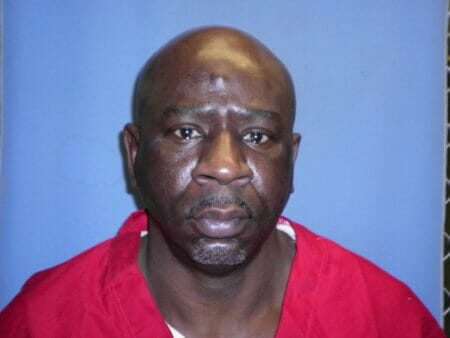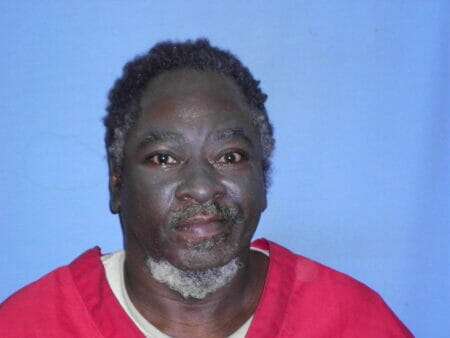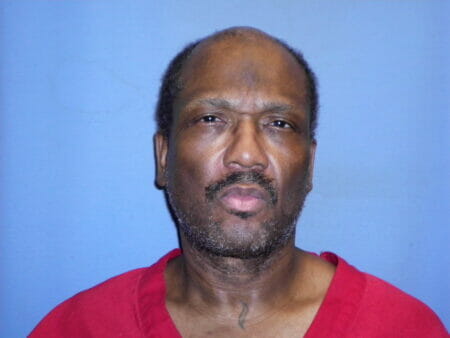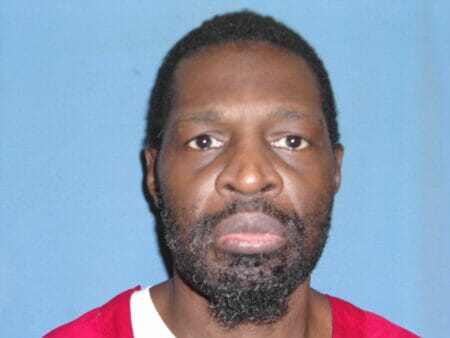
Anthony Carr was sentenced to death by the State of Mississippi for a quadruple murder. According to court documents Anthony Carr and Robert Simon forced their way into a home and during the process of robbing it the family came home. Anthony Carr and Robert Simon would shoot and kill four members of the Parker family including two young children, 12 year old Gregory and 9 year old Charlotte. After the murders the house was set on fire. Anthony Carr and Robert Simon would be arrested, convicted and sentenced to death.
Mississippi Death Row Inmate List
Anthony Carr 2021 Information
| Race: BLACK | Sex: MALE | Date of Birth: 08/22/1965 |
| Height: 6′ 1” | Weight: 203 | Complexion: DARK |
| Build: MEDIUM | Eye Color: BROWN | Hair Color: BLACK |
| Entry Date: 09/20/1990 | Location: MSP | UNIT: UNIT 29 |
| Location Change Date: 12/17/2019 | Number of Sentences: 4 | Total Length: DEATH |
Robert Simon 2021 Information

| Race: BLACK | Sex: MALE | Date of Birth: 08/23/1963 |
| Height: 6′ 0” | Weight: 248 | Complexion: DARK |
| Build: LARGE | Eye Color: BROWN | Hair Color: GREY OR |
| Entry Date: 07/06/1990 | Location: MSP | UNIT: UNIT 29 |
| Location Change Date: 11/12/2019 | Number of Sentences: 7 | Total Length: DEATH |
Anthony Carr More News
On Friday, February 2, 1990, Carl Parker, his wife Bobbie Jo, and their children, twelve year old Gregory and nine year old Charlotte, left the Riverside Baptist Church in Clarksdale to return to their home on Highway 322 in rural Quitman County, some fifteen miles from Clarksdale. The Parkers were last seen leaving the church between 8:45 and 9:15 p.m. that evening.
Around 11:00 p.m., Billy King was driving east on Highway 322 when he spotted a fire at the Parker home. Mr. King went to the house, tried to open the unlocked carport door, but was driven back by the fire. Mr. King left the Parkers’ house and drove to the house of the nearest neighbor to call for help. Mr. King did not pass any vehicles on his way to the neighbor’s house, but as he looked back towards the Parkers’ house from the neighbors’ front door, he saw two vehicles leave the Parker house, driving west on Highway 322.
At approximately the same time that King was at the neighbor’s house trying to get help, Joe McCullough was driving east on Highway 322. McCullough testified that he remembered meeting two vehicles that were tailgating closely and traveling very fast towards Clarksdale. He identified the lead vehicle as a Silverado pick-up truck.
Fireman Jerry Wages with the Lambert Volunteer Fire Department received the call reporting the Parkers’ fire between 11:00 and 11:20 p.m. It was raining heavily that evening. Wages was the first to arrive at the scene of the fire, and he found the southwest corner of the house on fire. The back door was unlocked, and he crawled into the house. He recovered the body of Carl Parker. Wages went back into the house and recovered the bodies of Charlotte and Gregory. Wages recalled that Carl and Gregory were bound at their feet and ankles and their wrists were tied behind their backs. There was also a remnant of a binding on Charlotte’s wrist. Charlotte was undressed from the waist down beneath the dress she was wearing. Wages said she had a wound on her hip as well. The body of Bobbie Jo Parker was not discovered until the early morning hours after the fire was finally extinguished. Her body was found in the southwest corner of the house and was burned beyond recognition.
Quitman County Sheriff Jack Harrison arrived at the scene and notified authorities that Carl Parker’s red Silverado pick-up truck was missing. He saw the bodies and noticed the hands and feet of Carl and Gregory were bound. Charlotte had a red ribbon tied around her arm. Her knee high stockings were partially burned off, and she did not have on underclothes. Bobbie Jo Parker’s body was found lying on some springs around 2:00 or 2:30 a.m.
Around midnight that same night, Eddie Lee Spralls, a Clarksdale resident, looked out his back window after hearing a door slam and observed a red truck backing up between two abandoned houses. Spralls called the police. Upon arrival, the Clarksdale police put a spotlight on the truck. Two black males jumped out of the truck and ran toward Highway 61.
The truck, identified by the police as Carl Parker’s, was parked close to the home of Robert Simon’s mother-in-law. It was filled with household items, furniture, appliances, and other valuables, all belonging to the Parkers. A shotgun was found in the back of the truck, and a pillow case containing two revolvers and other items belonging to the Parkers was found near the truck.
Martha Simon, Robert Simon’s wife, had left Memphis and had driven to Clarksdale to see her mother on February 2, 1990. She said that Carr had been living with her and Robert in their Memphis apartment for the previous three weeks. Around 12:30 a.m. on February 3, 1990, Martha was in her car when she saw Carr walking down the street. Carr asked Martha if she had seen Robert. Martha replied that she thought Carr and Robert had been together, but Carr told her that he had come on ahead and Robert was behind him. She asked Carr how he got to town. Carr responded that he was driving a truck and pointed in the direction where the Parker truck was later found. Carr told her that he had parked the truck on 9th Street and that the truck had “stuff” in it. He also told Martha that he had some money. Carr said that he had put the keys to the truck along the railroad tracks and some coveralls in a dumpster, the location of which Carr told her.
Martha again saw Carr looking for Robert around 8:00 a.m. at her mother’s house. The next time she saw Carr, Robert was with him. They came to Martha’s mother’s house and told her they were going to Memphis. Carr was wearing a black jogging suit each of the three times Martha saw him.
Coahoma County Sheriff Andrew Thompson, Jr., received information from Martha Simon that led to the recovery of a pair of coveralls and a pair of work gloves from a locked dumpster near Simon’s mother-in-law’s house in Clarksdale. The coveralls were wet and smelled of smoke. The gloves were identified by Dean Parker, Carl Parker’s son, as the same type gloves he had given his father.
Ken Dickerson, an investigator with the Highway Patrol, and Sheriff Thompson, with Martha Simon’s permission and in her company, went to Memphis to search the apartment she shared with her husband, Robert Simon. They found the wet, black jogging suit Carr was wearing earlier that day. Other items including a man’s and a woman’s wedding rings, a money clip, and ammunition were also found in the apartment. Martha identified items in the apartment that had not been there earlier.
Scott Parker and Dean Parker, Carl’s sons from a previous marriage, identified many of the items found in the truck, the pillow case, and the apartment in Memphis. Carr’s fingerprint was found on the shotgun found in the truck.
On February 3, 1990, two arrest warrants were issued in Marks, Mississippi. Anthony Carr and Robert Simon, Jr., were arrested around 3:30 p.m. that day in Clarksdale.
According to Anthony Washington, an inmate at the Tate County jail in the early part of February, 1990, Carr came in around midnight and was put into the cell next to his. Washington asked who he was and what he was in for, and Carr told him. Washington had been reading about the crime in the newspaper and offered to read the story to Carr. Washington said that he and Carr were playing cards when Carr stopped and said “we had a ball,” as he held his hand to his head like a gun.
Carr was later taken for a blood test. Upon his return, Carr asked Washington “are you straight?” and whether he could tell Washington something “brother to brother.” Carr asked Washington if they could tell if he raped that little girl, and Washington asked him what happened. Carr told Washington that he and his partner had raped the little girl and that one of them had to burn the house down to destroy the evidence.








